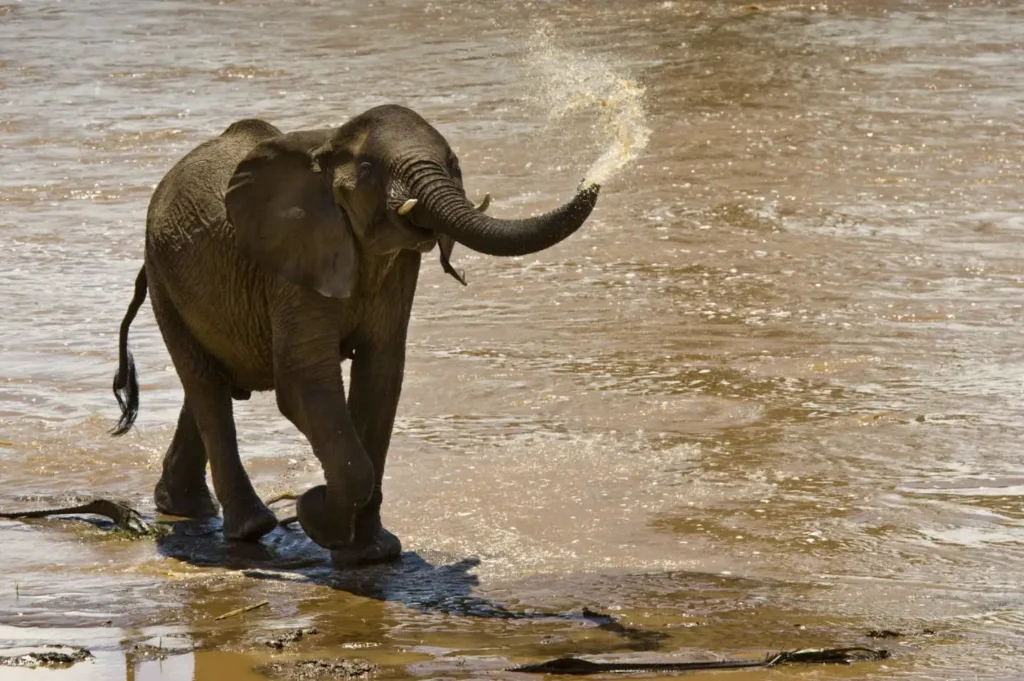Distribution and Status
In March 2021, following new research into the genetics of elephant populations, African elephants were reclassified by the International Union for Conservation of Nature (IUCN) as two distinct species: African forest elephant (Loxodonta cyclotis) and African savanna elephant (Loxodonta africana). Read more about forest elephants.
African elephant numbers have plummeted from 1.2 million in the 1970’s to only around 500,000 alive today. African elephants were previously listed in the IUCN Red List of Endangered Species as Vulnerable. The African forest elephant was reassessed in March 2021 as Critically Endangered, following decades of population decline due to poaching for ivory and loss of habitat. The African savanna elephant was reassessed as Endangered.

Elephant poaching across much of the savannah elephant range in east and southern Africa has been reduced. In 2014 there were 26 Elephant Crisis Fund (ECF) sites across Africa where so many elephants were being killed by poachers that their continued survival was uncertain. Today, poaching in 15 of these sites has been reduced to a point that it does not pose a current threat. However, elephants are far from being safe. Despite the best efforts of our partners, in 11 ECF sites poaching remains a major problem—and seven of these are in Central Africa, home to the newly recognized forest elephant species of which there are less than 100,000 left. Other threats are emerging rapidly, including human-elephant conflict and loss and degradation of elephant habitat.
If elephant conservation is not prioritised, we risk losing this iconic and critical architect species from ecosystems across Africa. We need to preserve intact elephant habitat and intact elephant communities for both the health and benefit of the planet and the health and well-being of this largest of all sentient, social mammals left on Earth today.
Read about the projects funded by ECF to tackle these challenges.